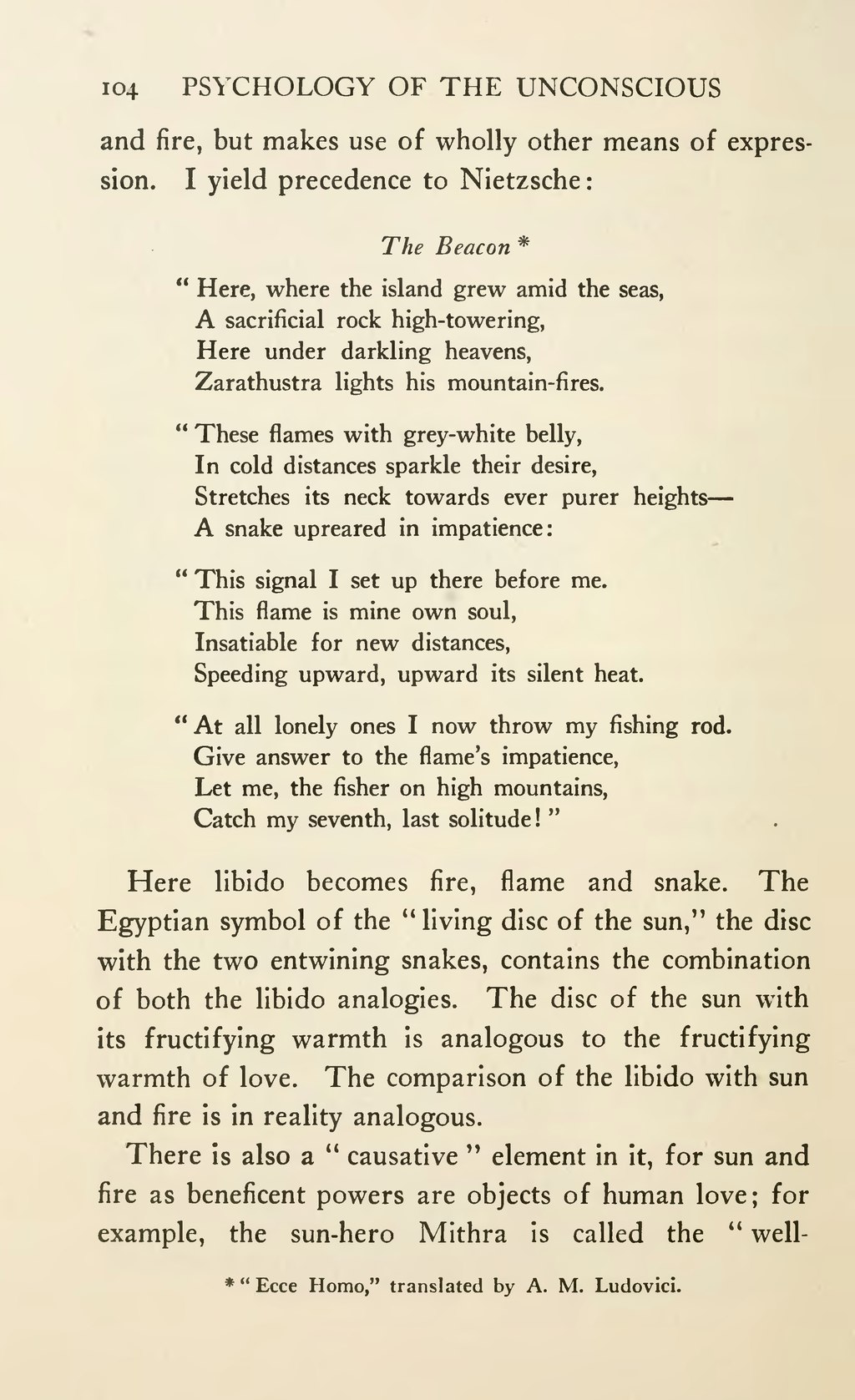and fire, but makes use of wholly other means of expression. I yield precedence to Nietzsche:
The Beacon[1]
"Here, where the island grew amid the seas,
A sacrificial rock high-towering,
Here under darkling heavens,
Zarathustra lights his mountain-fires.
"These flames with grey-white belly,
In cold distances sparkle their desire,
Stretches its neck towards ever purer heights—
A snake upreared in impatience:
"This signal I set up there before me.
This flame is mine own soul,
Insatiable for new distances,
Speeding upward, upward its silent heat.
"At all lonely ones I now throw my fishing rod.
Give answer to the flame's impatience,
Let me, the fisher on high mountains,
Catch my seventh, last solitude!"
Here libido becomes fire, flame and snake. The Egyptian symbol of the "living disc of the sun," the disc with the two entwining snakes, contains the combination of both the libido analogies. The disc of the sun with its fructifying warmth is analogous to the fructifying warmth of love. The comparison of the libido with sun and fire is in reality analogous.
There is also a "causative" element in it, for sun and fire as beneficent powers are objects of human love; for example, the sun-hero Mithra is called the "well-
- ↑ "Ecce Homo," translated by A. M. Ludovici.
